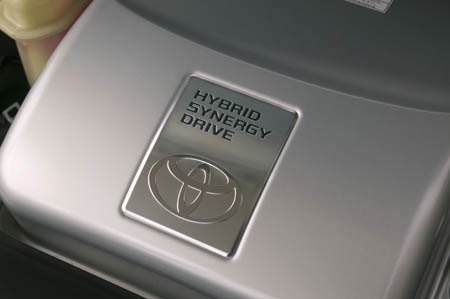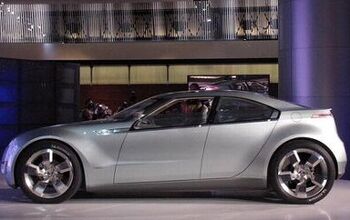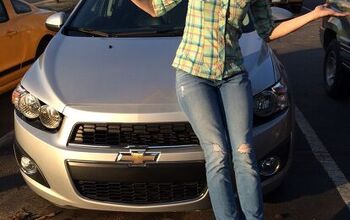The Truth About Hybrids
The Toyota Prius, Honda Accord hybrid and Ford Escape hybrid are a major hit. The buff books rave about them, the Greens bless them and retail customers can't get enough (literally). While the mileage, environmental and PC advantages of vehicles powered by a gas – electric powerplant seems obvious, how much of this hybrid mania is hype?
Buyers pay a large premium for a hybrid Escape or a Prius, presuming that the increased fuel mileage makes them a better environmental citizen. While there's no question that the Toyota, Honda and Ford hybrids are more fuel efficient than their conventionally powered equivalents, the difference is nowhere near as great as the Environmental Protection Agency (EPA) numbers suggest.
Because of the low speeds involved, the city portion of the EPA's test is accomplished in battery-only mode. As the gasoline engine is off-line for a significant part of the test, the eventual mileage figure is grossly inflated. The test fails to consider the fuel needed to recharge the batteries later on. What's more, all energy-draining, electrically-powered accessories (including AC) are switched off during both the urban and highway tests. These variables contribute to the huge discrepancy between the EPA's official numbers and hybrid owners' real world experience.
Few people realize that a hybrid's power train adds roughly 10% to the weight of a car. Even fewer realize that manufacturers try to offset the weight penalty– and add to the hybrid's headline-grabbing mileage figures– by the extensive use of non-hybrid gas-saving technology. Engine shut-off at idle, electric power steering, harder and reduced rolling resistance tires (at the expense of comfort and traction), reduced option content, reduced engine performance, and, in the case of the Ford, a continuously variable transmission (CVT) all help raise the cars' overall efficiency.
Of course, if gas mileage is the ultimate goal, all of these strategies could be applied to a "standard" car. A non-hybrid model with the equivalent modifications would significantly narrow the mileage gap with its hybrid sibling. In fact, in normal use, the margin between truly comparable hybrid and non-hybrid cars could be less than 10%– hardly enough to justify the extra purchase price. And, lest we forget, the hybrid's gas-saving advantage is not without its own particular environmental costs…
Gas – electric hybrid engines use several large batteries. Creating these power cells requires a couple of hundred pounds of heavy metals– not to mention the copper used in the large electric drive motors and the heavy wires they require. Mining and smelting lead, copper and other heavy metals is an energy intensive process that generates both air pollution and deforestation. Disposing of the batteries when they outlive their usefulness also raises environmental challenges.
And then there are the safety problems related to the gas – electric hybrid engine's high voltages and amperages. While Federal Motor Vehicle Safety Standards (FMVSS) regulate a passenger vehicle's basic crash protection, there are no federally mandated procedures remain for the protection of rescue workers at the site of an accident involving a hybrid-powered vehicle. Service technicians and do-it-yourself owners also lack the guidelines, education and training necessary to safely repair hybrid engines.
So, if the hybrid's mileage advantage is minimal, and the technology has its own set of negative environmental side effects, why is hybrid technology so popular, both in the marketplace and in the glossy pages of the car mags?
Americans are fond of turning to simple silver bullets to solve complicated problems. The hybrid solution seems ideal. Want to be environmentally responsible? Buy a hybrid. A hybrid car offers instant gratification, PC-style. It relieves consumers of both guilt and personal responsibility for the broader impact of their daily energy consumption habits. Heaven forbid that a hybrid owner should switch off their central air, or buy less disposable products, or use their car less, to help protect the environment.
Hybrid technology embodies America's 'solution of the day' syndrome. A quarter of a century ago, the diesel-powered car was going to free us from dependence on imported oil. A while later, the turbocharger was set to improve the efficiency of the internal combustion engine and liberate us from foreign oil addiction. About a decade ago, the California Air Resources Board thought that battery-powered electric cars were the answer, cleaning the air as they saved the world's petrochemical resources.
The problem with the 'solution of the day' is that few of these "easy" solutions actually work. Automotive history is littered with failed miracles, from the kerosene-driven Stanley Steamer to the rotary-powered Skycar. Time has proven that the only innovations that persevere in the marketplace are the ones that deliver real benefits. No amount of hype can obscure, for long, the lack of results. When boosters call hybrid technology an "interim" solution to our energy needs, they're more right than they even know.
More by Bob Elton
Latest Car Reviews
Read moreLatest Product Reviews
Read moreRecent Comments
- ToolGuy First picture: I realize that opinions vary on the height of modern trucks, but that entry door on the building is 80 inches tall and hits just below the headlights. Does anyone really believe this is reasonable?Second picture: I do not believe that is a good parking spot to be able to access the bed storage. More specifically, how do you plan to unload topsoil with the truck parked like that? Maybe you kids are taller than me.
- ToolGuy The other day I attempted to check the engine oil in one of my old embarrassing vehicles and I guess the red shop towel I used wasn't genuine Snap-on (lots of counterfeits floating around) plus my driveway isn't completely level and long story short, the engine seized 3 minutes later.No more used cars for me, and nothing but dealer service from here on in (the journalists were right).
- Doughboy Wow, Merc knocks it out of the park with their naming convention… again. /s
- Doughboy I’ve seen car bras before, but never car beards. ZZ Top would be proud.
- Bkojote Allright, actual person who knows trucks here, the article gets it a bit wrong.First off, the Maverick is not at all comparable to a Tacoma just because they're both Hybrids. Or lemme be blunt, the butch-est non-hybrid Maverick Tremor is suitable for 2/10 difficulty trails, a Trailhunter is for about 5/10 or maybe 6/10, just about the upper end of any stock vehicle you're buying from the factory. Aside from a Sasquatch Bronco or Rubicon Jeep Wrangler you're looking at something you're towing back if you want more capability (or perhaps something you /wish/ you were towing back.)Now, where the real world difference should play out is on the trail, where a lot of low speed crawling usually saps efficiency, especially when loaded to the gills. Real world MPG from a 4Runner is about 12-13mpg, So if this loaded-with-overlander-catalog Trailhunter is still pulling in the 20's - or even 18-19, that's a massive improvement.





































Comments
Join the conversation
With each passing day the "Hybrids are overrated" articles become more dated, especially with ever increasing fuel costs. Arguing against the price premium of the hybrid system is meaningless, the same argument could be used against the premium paid for say a popular vehicle versus an unpoplular one. Say a Camry versus a Taurus. Assuming that one was going to pay a certain pice range anyway for a vehicle then the premium argument is moot. If one was going to buy a vehicle in the 20 to 25 thousand dollar range and then one purchased a vehicle for say 24 thousand dollars, the fact that the same vehicle could be had without the hybrid system for say 20 thousand dollars is as meaningful as telling someone you could have purchased a Falcon instead of a Mustang and saved x dollars. If you want a car and it is in your price range and you want a feature then manufacturers must give consumers what they demand. The anti-hybrid outlook is one of the factors killing GM and Ford.